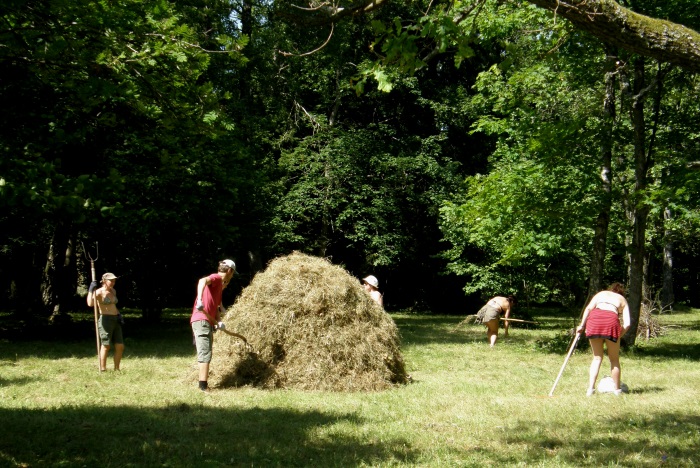The primary objective of the management system is to establish an updated management procedure for all protected natural values and achieve the defined conservation objectives.
The management procedure of protected areas is established on the basis of the Nature Conservation Act and conservation rules of the specific protected area. The conservation rules must be read in conjunction with the Nature Conservation Act https://www.riigiteataja.ee/en/eli/ee/515112018002/consolide/current.
The management of conservation areas is based on the Nature Conservation Act and the regulation on taking under protection, which sets out the values for conservation of the site that must be maintained in good order.
In the case of larger protected areas and conservation areas, management plans are drawn up, in which the activities necessary for the active protection of the target values are planned for ten years.

Wooded meadow as a heritage community has a very important meaning in the Estonian national culture. Wooded meadow in Mäepea, Viidumäe Nature Reserve. Photo by Kadri Paomees
Functions of the manager of the protected area
The manager of the areas taken under the protection by the Government of the Republic is the Environmental Board.
The areas of activity of the manager of the protected area are the determination of environmental use, ie the issuance of operating licenses and the setting of conditions, the organization of nature conservation activities and monitoring compliance with the requirements of the protected area.
The protected areas set up by the local municipality are managed by the respective local government organization.
Environmental permit
In conservation zones and limited management zones the Nature Conservation Act and the protection rules enable to regulate various activities :
- to draw up a land readjustment plan, to carry out land-use planning and to change the boundaries of land parcels of the cadastral unit;
- to establish a detailed plan and a comprehensive plan;
- to design and construct buildings, including erecting or expanding places for docking or boat channels;
- to create a new body of water having an area of more than five square meters, unless a special permit for water is required;
- forest cutting;
- fishing;
- hunting and additional feeding;
- water regime adjustment and land improvement work;
- driving a vehicle, off-road vehicle or floating equipment;
- camping, campfire and organizing a folk event;
- picking of berries, mushrooms, other forest products and straws;
- staying of people.
Protection rules must be read in conjunction with the Nature Conservation Act, as under the act these activities are prohibited in the conservation zones and strict nature reserves, unless provided otherwise in protection rules. Therefore, if the above-mentioned activities are not permitted in the protection rules of the protected area, they are prohibited under the Nature Conservation Act.
The Nature Conservation Act and all protection rules are published in the State Gazette.
Movement on a protected natural site
Other persons are allowed to stay in a yard where a protected natural monument is situated with the consent of the possessor of the immovable The possessor of an immovable situated within the area of a protected natural object, or of an immovable where a protected natural object is situated has no right to prohibit the staying in case of activities related to the administration or management of the natural object and the staying of a research worker who holds a certificate described in the Nature Conservation Act.
In the strict nature reserve, any human activity is generally forbidden. In the conservation zone, it is possible to restrict people's stay in the habitat and growth site of protected species, in the concentration site of migratory species in terms of time or this movement is permitted only with the consent of the Environmental Board that manages the protected area.
In the latter case, an application for a reasonable request for movement must be submitted to the manager of the protected area, ie the Environmental Board for consent, info@keskkonnaamet.ee
Areas with movement restrictions can be viewed by opening card layers in the public map application of the nature observation database (upper bar) and marking a layer of movement restrictions.
Flight restrictions in environmentally sensitive areas are established on the basis of the Aviation Act by regulation. An aviation permit is issued by the Estonian Civil Aviation Authority and must be approved by the Ministry of Climate.
Land tax in protected areas
Starting from January 1, 2009 when the amended Land Tax Act entered in force, no land tax shall be paid from the land of conservation reserve of protected areas and protection management zone and from the land of special management zones of permanent habitats.
Additional information about protection planning
For managing works for providing protection, protection management plans have been drawn up for protected areas that can be found in the website of the Environmental Board.
Information about the restoration and maintenance of semi-natural communities is also available on the website of the Environmental Board.